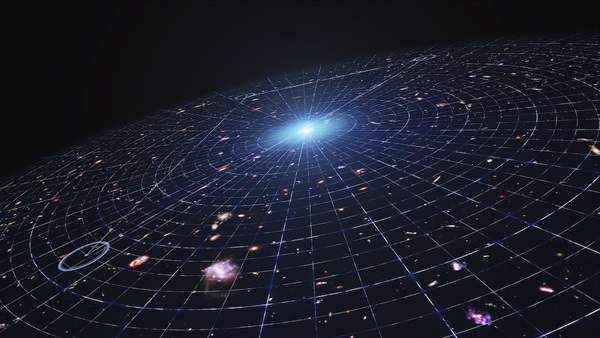We see stars all around, so why don’t their combined light add up to make our night sky and surrounding space bright?
German physicist Heinrich Wilhelm Olbers put the same puzzle this way in1823. If the universe is infinite in size and stars or galaxies are distributed throughout this infinite universe, then we are certain to see a star eventually in any direction we look. As a result, the night sky should be aglow.
Why isn’t it?
In fact, the answer is far more profound than it appears. There have been many attempts at explaining this puzzle, dubbed over the years. One version implicated dust between stars and perhaps between galaxies. The idea was that the dust would block the light from far away objects making the sky dark. In reality, however the light fall on the dust would eventually heat it up so that it would glow as brightly as the original sources of light.
Another proposed answer for the paradox held that the tremendous speed of distant galaxies would move light out of visible range into invisible infrared. But if this explanation were true, shorter wave length ultraviolet rays would also be shifted to visible range-which doesn’t happen.
“And He made dark its night and brought out its light.” (Al-Quran, 79:29)
“I swear by the night when it draws a veil”. (Al-Quran, 92:1)
The best resolution to Olbers paradox at present has two parts. First, even if our universe is infinitely large, it is not. This point is critical because light travels at finite (though very fast) speed of about 300,000 kilometers per second.
We can see something only if the light that emits had time to reach us. In our everyday experience, that time delay is a minuscule: even seated in the balcony of concert hall, you’ll see the conductor of the symphony raise her baton less than a millionth of a second after she actually does.
When distances increase, though, so the times delay. For instance, astronauts on the moon experience a 1.5 second time delay in their communication with mission control due to the time it takes the radio signal (which are a form of light) to travel round-trip between earth and moon. Most astronomers agree that the universe is between 10 and 15 billion years old. And it means that the maximum distance from which we can receive light is between 10 and 15 billion light years away. So, even if there are more distant galaxies, their light will not yet have had time to reach us.
The second part of the answer lies in the act that stars and galaxies are not infinitely longlived. Eventually, they will dim. We will see this effect soon in nearby galaxies. Thanks to shorter light travel time. The sum of these effects is that at no time are all the conditions for creating a bright sky fulfilled. We can never see light from galaxies at all distance at once, either the light from the most distant objects hasn’t reached us yet, or if it has, then so much time would have had to pass that nearby objects would be burned out and dark. Al Quran gave signs for this description.
Apart from this, there are more descriptions about universe, astronomy, physics, chemistry, geography, embryology, necrology and many more in the Holy Scripture Al-Quran. So, Al Quran is the source of all knowledge and Science.

